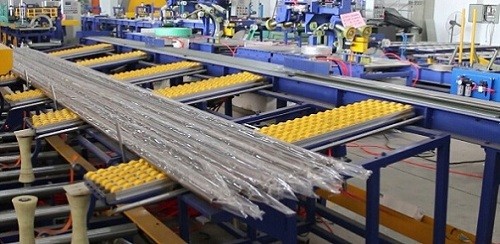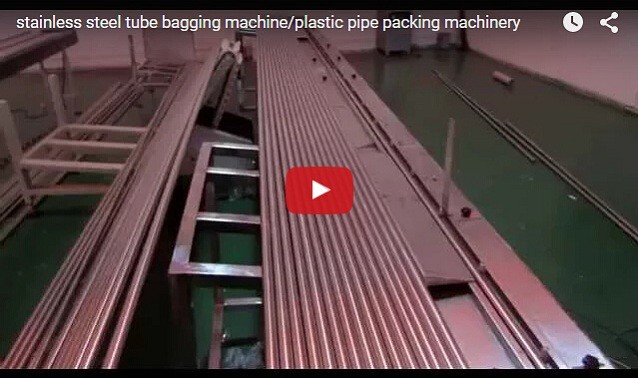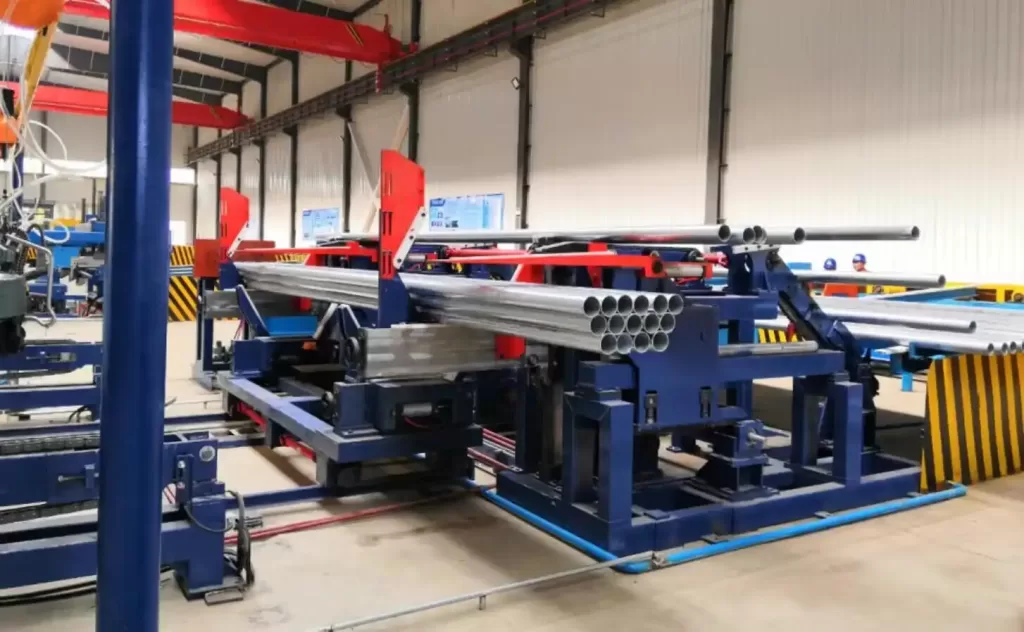Enhancing Tube and Pipe Packaging: An Overview of Automated Flow Wrapping and Bagging Systems
Handling and packaging long, cylindrical products like metal tubes and pipes presents unique challenges for fabricators and manufacturers. These items are often susceptible to surface damage, contamination, and corrosion during storage and transit. Automated bagging systems using flow wrapper technology offer an efficient and protective solution.

What is a Tube Flow Wrapper and Bagging Machine?
Flow wrappers are packaging machines designed to horizontally wrap products within a continuous tube of packaging material, which is then sealed at both ends and cut to create individual packages or bags. When adapted for pipes and tubes, these machines automate the process of enclosing single or bundled cylindrical items in a protective film sleeve or bag. This method contrasts with manual bagging or less comprehensive wrapping techniques.
The Automated Bagging Process Explained
The operation of an automatic pipe and tube bagging system typically involves several key stages:
- Infeed Conveying: Tubes or pipes are fed into the machine, often via a specialized conveyor system designed to handle long items and maintain proper spacing and alignment.
- Film Dispensing and Forming: A roll of flat packaging film (commonly polyethylene) is unwound. The flow wrapper forms this flat film into a continuous tube around the product as it moves through the machine.
- Longitudinal Sealing: A sealing mechanism creates a fin seal along the length of the film tube, typically underneath the product.
- Cross Sealing and Cutting: Once the tube or pipe is fully encased within the film tube, rotating or reciprocating jaws create sealed ends (cross seals) and cut the film to separate the bagged product.
This continuous motion allows for high throughput packaging. Systems can often achieve speeds of up to 50 meters per minute, making them suitable for high-volume production environments.

Key Features and Considerations
When evaluating tube bagging systems, consider these aspects:
- Speed and Throughput: Match machine capability to production line output requirements.
- Product Dimensions: Ensure the machine can accommodate the range of diameters and lengths processed in your facility.
- Film Type: Select appropriate film materials (e.g., PE, VCI film for corrosion protection) based on product protection needs and environmental factors.
- Sealing Technology: Different sealing methods (heat sealing, ultrasonic) offer varying levels of integrity and suitability for different films.
- Control Systems: Modern machines often feature PLCs and HMIs for ease of operation, recipe storage, and integration with upstream/downstream equipment. Sensors ensure accurate product positioning and material feeding.

steel tube packing line2 Benefits of Automated Tube Bagging
Implementing an automated flow wrapping system for tubes and pipes provides several advantages:
- Enhanced Product Protection: The sealed bag shields products from dust, dirt, moisture, and scratches during handling, stacking, storage, and shipping.
- Increased Operational Efficiency: Automation significantly reduces manual labor requirements compared to hand-bagging or wrapping methods, freeing up personnel for other tasks.
- Consistent Packaging Quality: Automated systems provide uniform, repeatable packaging results, contributing to a professional product appearance.
- Improved Material Handling: Bagged tubes can sometimes be easier to handle and inventory.
- Reduced Waste: Compared to some manual methods, automated systems can optimize film usage.
Applications Across Industries
While frequently used for stainless steel tubes, these automated bagging solutions are valuable in various sectors handling long cylindrical or extruded products, including:
- Steel and aluminum pipe and tube manufacturing
- Plastic pipe and conduit production
- Extruded profile manufacturing (e.g., window frames, trim)
- Copper tubing
- Other metal fabrication involving long stock
Watch the Process
See a typical tube bagging machine in operation:
Conclusion
Automated pipe and tube bagging via flow wrappers presents a robust solution for fabricators seeking to improve packaging efficiency and product protection. By enclosing long, cylindrical items in a sealed film bag, these systems help mitigate damage risks during transit and storage while reducing reliance on manual labor. Careful consideration of machine specifications and film types ensures optimal performance for specific application needs.
More information on specific configurations can be found here: http://www.fhopepack.com/steel-tube-packing-machine.html